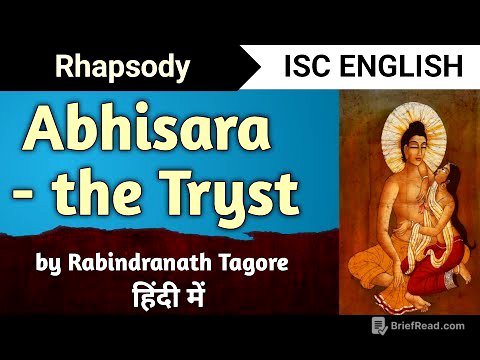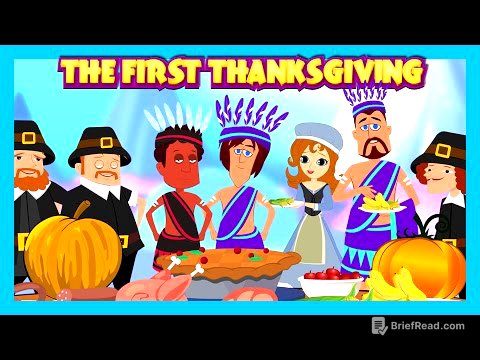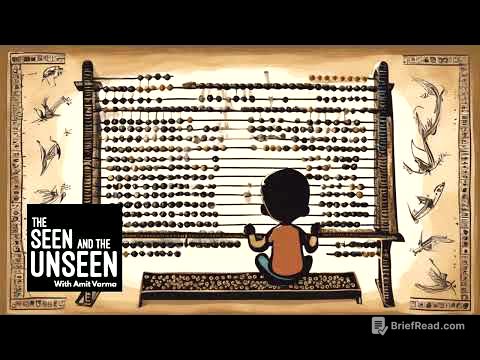TLDR;
This YouTube video by Govindlal Patel discusses themes of devotion, the nature of God, and the importance of remembering God, especially during times of distress. It includes stories and interpretations from Hindu scriptures, emphasizing the omnipresence of God and the path to liberation through faith and devotion. The video also touches on the illusionary nature of the material world and the significance of spiritual practice.
- Importance of remembering God's name, especially in times of sorrow.
- The story of Gajendra Moksha as a metaphor for seeking divine help in distress.
- The omnipresence and various incarnations of God.
The Illusion of Names and Forms [0:01]
The speaker begins by discussing the futility of attachment to names and forms in the material world, especially in the context of Kalyug. He suggests that true benefit comes from associating with beings who perform good deeds, rather than getting caught up in superficial identities and material possessions. The speaker emphasizes the importance of detaching from worldly attachments and recognizing the divine presence beyond names and forms.
Naradji's Visit to Dharmaraj [2:00]
Naradji visits Dharmaraj and expresses surprise that he wasn't invited to a Yagna (ceremonial sacrifice) being held at Dharmaraj's house. Naradji points out that the true form of God is present in Dharmaraj's home, yet Dharmaraj seems unaware. He criticizes those who meditate with closed eyes, missing the divine presence in the world around them. Naradji emphasizes that God is very lucky to be in Dharmaraj's house, highlighting the divine opportunity Dharmaraj is overlooking.
Revealing the Truth of Shri Krishna [4:44]
Dharmaraj is surprised to hear that God is in his house. Naradji explains that Shri Krishna is the Supreme Being, but Dharmaraj doesn't recognize Him. Naradji then attempts to reveal the truth of Shri Krishna, but is initially met with resistance. Eventually, Naradji reveals Shri Krishna's divine nature, reciting "Hey Ayam Brahma," signifying that Shri Krishna is the ultimate reality.
The Leela of Bal Krishna Eating Soil [9:20]
The narrative shifts to a story of Bal Krishna (young Krishna) playing with his friends. In this leela (divine play), Krishna eats soil, which leads to Yashoda (Krishna's mother) questioning him. When Yashoda asks Krishna to open his mouth, she sees the entire universe within, realizing Krishna's divine nature. This story illustrates the concept that the divine is present even in the simplest of forms and actions.
Yashoda's Realization and the Saint's Darshan [13:24]
Yashoda, after witnessing the universe in Krishna's mouth, is filled with awe and fear. She realizes the true divine nature of her child. A saint visits Yashoda seeking darshan (sight) of Bal Krishna. Despite some initial hesitation, Yashoda eventually allows the saint to see Krishna, emphasizing the importance of divine sight and blessings.
Dharmaraj's Realization and Naradji's Explanation [19:31]
Naradji explains to Dharmaraj the truth of Shri Krishna, reciting "Oh Ayam Brahma," confirming Krishna as the Supreme God. Dharmaraj finally understands that Shri Krishna is not merely Vasudev's son but the ultimate reality. Naradji emphasizes that he facilitated the darshan of Shri Krishna for Dharmaraj, highlighting the role of a guru in revealing the divine.
The Eighth Skandha and the Story of Gajendra Moksha [22:32]
The speaker transitions to discussing the Eighth Skandha, which includes the story of Gajendra Moksha. He explains the concept of Manvantaras and the cyclical nature of time in Hindu cosmology. The story of Gajendra, an elephant caught by a crocodile, is introduced as a metaphor for the soul trapped in the material world, seeking liberation through divine grace.
Gajendra's Distress and Remembrance of God [26:29]
Gajendra, the elephant, is in distress, caught by a crocodile in a lake. Despite his strength, he is unable to free himself. In his despair, Gajendra remembers God and begins to pray. This part of the story emphasizes the importance of remembering God, especially in times of extreme difficulty and helplessness.
The Power of Mantra and Divine Intervention [29:29]
The speaker explains that in times of extreme sorrow, one remembers the mantra or the name of God. Gajendra, remembering his past life's mantra, calls out to God. Lord Vishnu, hearing Gajendra's prayer, appears with his Sudarshan Chakra and saves Gajendra by killing the crocodile. This illustrates the power of devotion and the swiftness of divine intervention when one surrenders to God.
The Significance of Gajendra Moksha and Seeking Refuge in God [35:29]
The speaker elaborates on the symbolism of the Gajendra Moksha story, explaining that the crocodile represents time and the fears of the world. He emphasizes the importance of seeking refuge in God to overcome these fears and attain liberation. The story teaches that even in the most dire situations, sincere devotion can lead to divine grace and salvation.
The Offering of the Lotus and Divine Love [37:10]
Gajendra offers a lotus to God as a symbol of devotion. The speaker explains the significance of the lotus in Hindu tradition, associating it with various deities like Shiva, Vishnu, and Brahma. He emphasizes that true worship involves offering with supernatural feelings, transcending worldly desires and attachments.
The Conclusion of Gajendra Moksha and the Path to Salvation [40:10]
The speaker concludes the story of Gajendra Moksha, highlighting that by reciting this story daily, one can improve their death and attain salvation. He stresses the importance of devotion, worship, and offering food and health to God. The ultimate message is that by engaging in devotion and remembering God, especially in times of distress, one can achieve auspiciousness and liberation.









